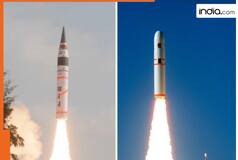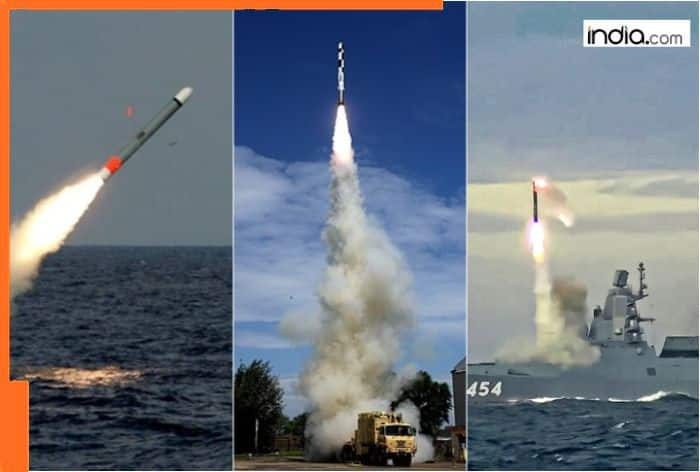
By clicking “Accept All Cookies”, you agree to the storing of cookies on your device to enhance site navigation, analyze site usage, and assist in our marketing efforts Cookies Policy.

Amidst all the wars and conflicts currently raging in different parts of the world, including the Russia-Ukraine war, and the Israel-Iran conflict in the Middle East, you would have come across terms like cruise missiles, ballistic missiles, and hypersonic missiles. Ever wondered what is the difference between these different types of missiles and which one is more lethal?
A cruise missile is a guided missiles which typically has horizontal flight path and stays within the Earth’s atmosphere. This type of missile usually travels at subsonic speeds (around Mach 0.8-0.9), but can also have variants capable of travelling at supersonic speeds, reaching Mach 2-3 levels.
Cruise missiles follow a low-altitude terrain-hugging flight path to avoid radar detection, and use guidance systems such as GPS, terrain contour matching (TERCOM), or radar, to reach their target.
One key advantage of cruise missiles is their terrain-hugging ability and their low-altitude flight capability, making them difficult to detect and intercept. However, on the flip side, their comparatively limited speed makes allows missile defense systems to intercept them with ease.
Some key examples of cruise missiles are India’s BrahMos supersonic missiles, and the US Tomahawks, which are subsonic.
As the name suggests, these missiles follow a ballistic trajectory, which means they are launched into space and then rapidly descend towards their earth-based target using gravity. A ballistic missile follows a high-arching parabolic path that leaves the Earth’s atmosphere during the missile’s mid-course phase.
Ballistic missiles can reach hypersonic speeds during re-entry (Mach 10-20), as they descend upon their target from space. For guidance, most ballistic missiles are usually guided during the boost phase as well as mid-course phase, while some advanced variants are even guided in the terminal phase for precision strikes.
Ballistic missiles have a much longer range, reaching thousands of kilometers, including Inter-Continental Ballistic Missiles (ICBMs), which can have ranges in excess of 5,500 km, and can traverse across continents, as the name suggest.
However, one glaring disadvantage of ballistic missiles is that radars and other aerial defense systems can detect them with ease due to their high-altitude trajectory. Additionally, ballistic missiles have a longer pre-launch prep time compared to other missile types.
Some examples include, India Agni missiles, US Minuteman III ICBM, and China’s Dongfeng-41.
Aptly named as they travel at hypersonic speeds of faster than Mach 5, hypersonic missiles are blazing fast as they can reach speeds of up to Mach 25 (25 times the speed of sound).
Depending on the propulsion system, boost-glide or cruise systems, hypersonic missiles can follow either a glide trajectory or an aerodynamic flight path, and use advanced guidance systems powered by AI and real-time targeting for precision strikes.
Hypersonic missiles have several advantages over their less advanced cousins, mainly due to their express speed, which makes them almost impossible to detect and intercept with even the most advanced missile defense systems in use today.
Additionally, hypersonic missiles have the ability to maneuver during flight, making it impossible to predict their flight path. The only drawback is the high development cost and technological complexity required to build these advanced missiles.
Some noteworthy examples are Russia’s Avangard missiles, US’ HAWC (Hypersonic Air-breathing Weapon Concept), and China’s DF-Z.
For breaking news and live news updates, like us on Facebook or follow us on Twitter and Instagram. Read more on Latest EXPLAINERS News on India.com.